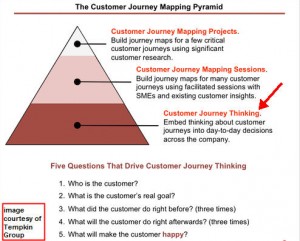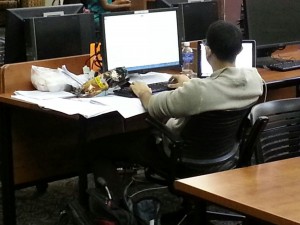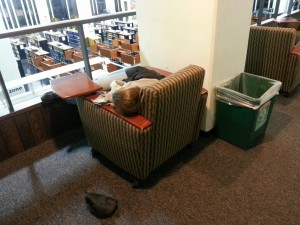You may be unfamiliar with Seth Godin.
Most people might refer to him as a marketing guru, but he has a lot more to share beyond marketing. For example, this insight about how easy it is to fail to deliver a high quality user experience.
He called this post, “Just Passing Through”:
Older guy walks into the service area on the parkway and asks one of the staff, “do you have a pay phone? My car broke down and I need to call my daughter.”
The staff person, killing time by checking his cell phone, is confused. He’s not sure what a pay phone is, then he figures it out, and says, “no,” before going back to his phone.
It never occurs to him to hand the phone to the man so he can make a call.
Every one of his customers is just passing through, no need to care.
Of course, at one level, all of us are just passing through.
From a more practical, business level, the ease of digital connection means that it’s more and more unlikely that you can be uncaring or mistreat people and not be noticed.
But most of all, life is better when we act like we might see someone again soon, isn’t it?
That phrase “passing through” caught my attention because we have many people passing through Paley Library and Tuttleman. Many of them are just passing through on the way to another destination. On any given day any student may stop at a service desk. Do we think of them as just passing through or is it an opportunity to build a relationship through a high quality user experience?
Many people pass through the library. Not all are Temple affiliates. A non-temple guest stopped at the desk and I could see she was somewhat exasperated. She had a child with her. She wanted to know how she could scan a job application and send it to an employer. Our scanners require an account to access the computers. All the computers were in use. I didn’t want to just say “sorry, but I can’t help you”. She was trying to cope with an impending deadline.
All I could think of was to guide her in using her phone camera to capture the document image, and then email the image to her own account where she could then forward it on to the employer. She felt relieved to have a way to accomplish her task.
Before she left, still holding the child, she put out one hand for me to shake, and as we did she thanked me. I was glad I didn’t just let her pass through even though she was a guest rather than a student. Perhaps she will enroll at Temple in future. Perhaps we will have an opportunity to build a relationship.
Even though we have many people just passing through it strikes me as a good idea, when working with those who do stop for help, to believe they will be back soon – and they will do so because their library experience was worth repeating.














